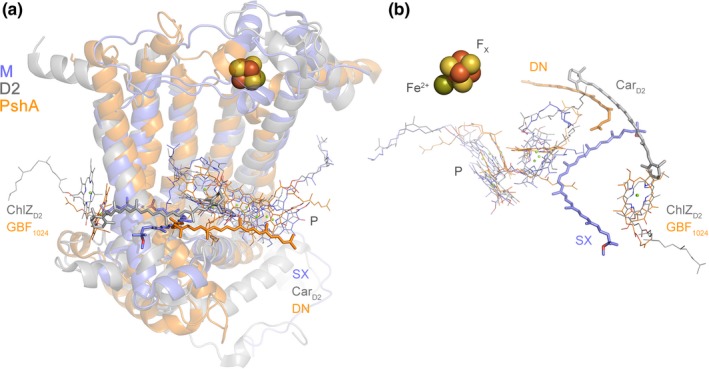Figure 8.

Carotenoids in the reaction center core. (a) Overlap of the M subunit of the anoxygenic Type II reaction center from Thermochromatium tepidum (light blue) with the D2 subunit of PSII from Thermosynechococcus vulcanus (gray) and the PshA subunit of the homodimeric Type I reaction center of Heliobacterium modesticaldum (orange), PDB ID: 5v8k (Gisriel et al., 2017). The protein backbone is showed in transparent ribbons, some of the photochemical pigments are displayed as thin sticks, and the closest carotenoids to the core are shown as thick sticks. SX stands for spirilloxanthin and DN for 4,4′‐diaponeurosporene. CarD2 is the core beta‐carotene bound by D2. Both SX and CarD2 have been demonstrated to have photoprotective roles, while the role of DN in the homodimeric Type I reaction center has not been demonstrated yet. However, based on its structural position overlapping with half of CarD2 and in Van der Waals contact with several bacteriochlorophyll g molecules, it can be predicted that it also has a photoprotective role. P denotes the photochemical “special pair” pigments. (b) A rotated view of the position of the carotenoids in the overlapped structures. The protein backbone has been hidden for clarity. ChlZD 2 and the bacteriochlorophyll g molecule, GBF 1024, occupy homologous positions [Colour figure can be viewed at wileyonlinelibrary.com]
